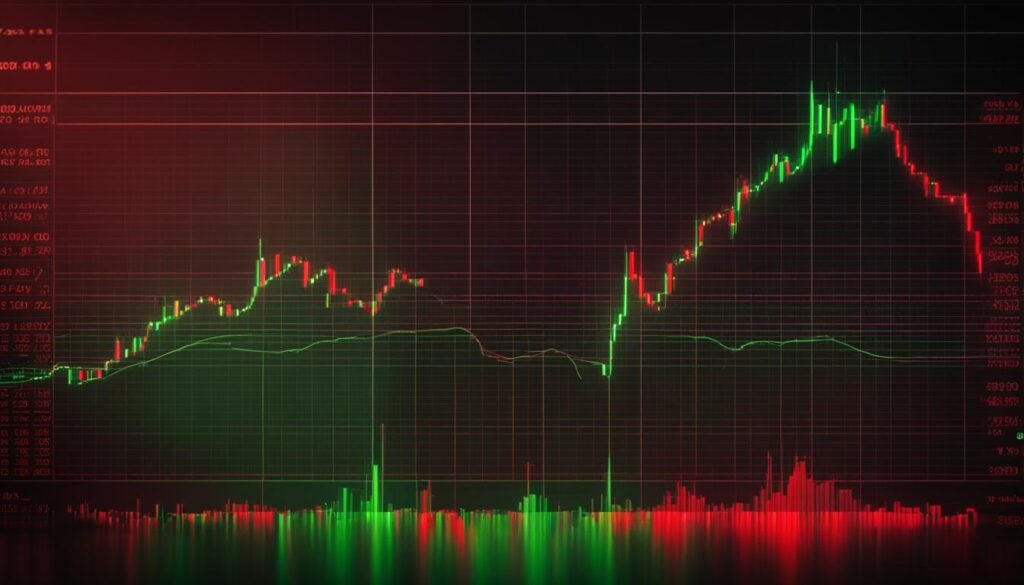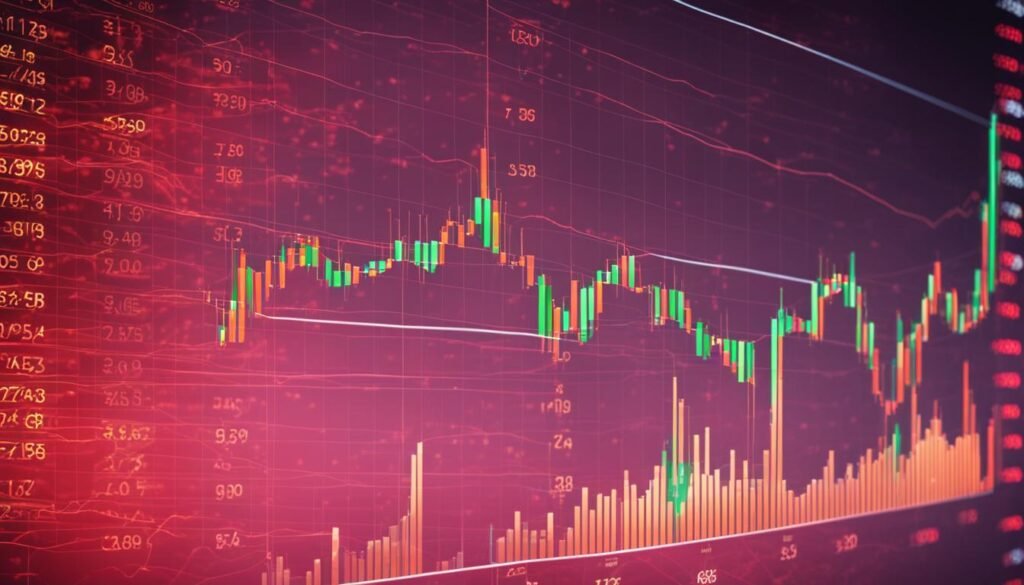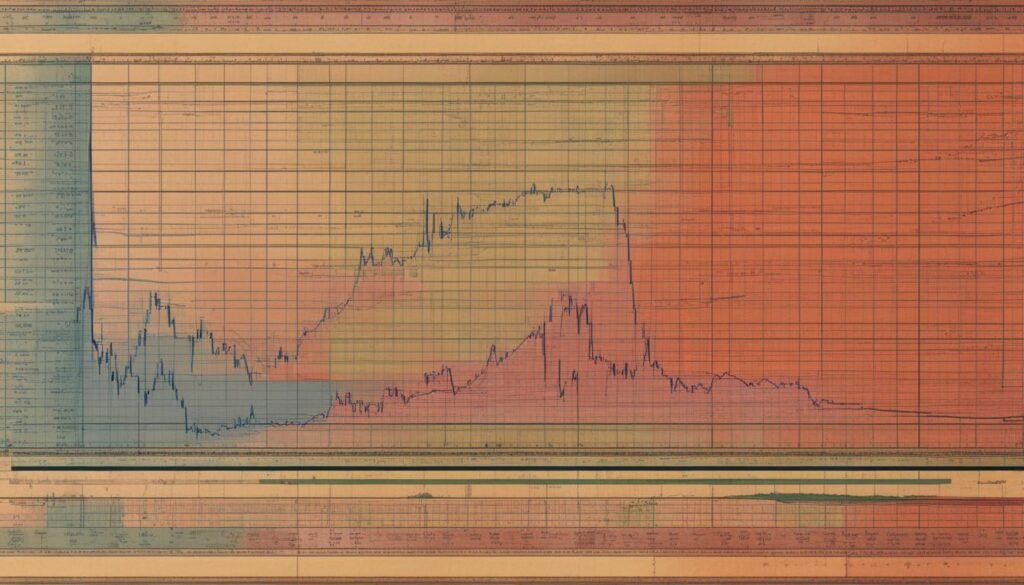Welcome to our comprehensive guide on fundamental analysis in forex trading. In this article, we will dive into the concept of fundamental analysis and its crucial role in understanding how economic factors impact currency values. Whether you’re new to forex trading or looking to enhance your trading strategies, understanding fundamental analysis is essential for making informed trading decisions.
In the ever-changing world of currency markets, fundamental analysis provides traders with valuable insights by analyzing economic data and news releases. By evaluating economic factors such as GDP growth, inflation rates, interest rates, and geopolitical events, traders can gain a deeper understanding of the forces driving currency movements.
Unlock the Secret to Forex Success with BOB James’ Top-Performing Signals! Experience the Ease of Proven, MyFXbook-Verified Strategies and Transform Your Trading Journey Today. Don’t Miss Out on Exceptional Performance – Join Now!
In the following sections, we will explore the essence of fundamental analysis, its divergence from technical analysis, and how traders can effectively incorporate it into their strategies. We will also examine specific economic indicators, the impact of interest rates, political factors, and trade balances, among other crucial aspects of fundamental analysis.
So, let’s embark on this journey to demystify fundamental analysis and equip ourselves with the knowledge to navigate the forex market with confidence.
Key Takeaways:
- Understanding fundamental analysis is crucial for forex traders to analyze economic factors that impact currency values.
- By evaluating economic indicators and events, traders can gain valuable insights into potential currency movements.
- Fundamental analysis differs from technical analysis, which focuses on price patterns and charts.
- Traders can integrate fundamental analysis into their strategies to make informed trading decisions.
- Economic indicators, such as GDP, inflation rates, and employment data, have a significant impact on currency values.
The Essence of Fundamental Analysis in Forex Trading
In the world of forex trading, fundamental analysis plays a pivotal role in understanding the forces driving currency movements. By evaluating economic factors and key indicators, traders can gain valuable insights into the strength and direction of currencies. In this section, we will explore the essence of fundamental analysis and its significance in forex trading.
Defining Fundamental Analysis within the Forex Market
Fundamental analysis is a method of evaluating currencies by analyzing the underlying economic factors that influence their value. It involves studying macroeconomic data, such as GDP growth, inflation rates, interest rates, employment figures, and trade balances, to assess the overall health of an economy and its impact on currency values. By understanding these fundamental factors, traders can make informed decisions based on the projected strength or weakness of a currency.
The Divergence Between Fundamental and Technical Analysis
While technical analysis focuses on price charts and patterns, fundamental analysis delves into the underlying economic factors affecting currency values. While technical analysis is useful for short-term trading, fundamental analysis provides a broader perspective, helping traders identify long-term trends and potential market reversals. By combining both approaches, traders can develop comprehensive strategies and enhance their understanding of the forex market.
Integrating Fundamental Analysis into Trading Strategies
To integrate fundamental analysis into trading strategies, traders must stay informed about economic news and events. Economic calendars provide a detailed schedule of upcoming releases, allowing traders to anticipate market reactions and plan their trades accordingly. By aligning fundamental analysis with technical indicators, traders can identify potential entry and exit points, manage risk effectively, and capitalize on market opportunities.
| Benefits of Fundamental Analysis | Challenges in Fundamental Analysis |
|---|---|
|
|
By embracing fundamental analysis and integrating it into their trading strategies, forex traders can gain a deeper understanding of the forex market and navigate its complexities with confidence.
Understanding Fundamental Analysis for Currency Traders
In this section, we will delve deeper into fundamental analysis for currency traders. Fundamental analysis plays a crucial role in evaluating currency strength and understanding the factors that influence currency values.
Core Principles of Evaluating Currency Strength
When evaluating currency strength, currency traders consider several key factors:
- Economic Growth: The overall health and growth of a country’s economy can impact its currency value. Positive economic growth often leads to a stronger currency.
- Inflation: Currency traders analyze inflation rates to assess the purchasing power of a currency. Higher inflation can erode the value of a currency.
- Interest Rates: Central bank policies and changes in interest rates can significantly influence currency values. Higher interest rates can attract foreign investors and strengthen a currency.
Understanding these core principles is essential for currency traders to make informed decisions based on economic fundamentals.
The Impact of Economic Indicators on Currency Values
Economic indicators provide valuable insights into the health of an economy and can have a significant impact on currency values. Traders closely monitor key indicators such as:
- Gross Domestic Product (GDP): GDP measures the economic output of a country and is a critical indicator of economic growth.
- Inflation Rates: Rising inflation can erode the purchasing power of a currency, while low inflation may indicate economic stability.
- Employment Data: Unemployment rates and non-farm payrolls can provide insights into a country’s job market, which can influence currency values.
By analyzing these economic indicators, currency traders can better anticipate currency movements and make informed trading decisions.
Utilizing Economic Calendars for Currency Insights
Economic calendars are valuable tools for currency traders to stay informed about upcoming economic events that may affect currency movements. By consulting economic calendars, traders can access information on scheduled releases of key economic data, such as GDP reports, employment figures, and central bank announcements.
Utilizing economic calendars helps currency traders anticipate market volatility and take advantage of trading opportunities. Staying updated with economic events and their potential impact on currency values is essential for successful trading.

Crucial Economic Indicators and Their Effect on Currencies
In this section, we will explore specific economic indicators that have a significant impact on currency values. Economic indicators provide valuable insights into the health and performance of a country’s economy, and understanding their influence is crucial for currency traders.
One of the most important economic indicators is Gross Domestic Product (GDP). GDP measures the total value of goods and services produced within a country’s borders and is a key indicator of economic growth. Changes in GDP can have a profound effect on currency values, as strong growth is often seen as a sign of a robust economy, leading to increased demand for the currency.
Inflation rates are another important indicator. Inflation refers to the rate at which prices for goods and services increase over time. High inflation can erode the purchasing power of a currency, leading to its depreciation. Conversely, low inflation can strengthen a currency. Traders closely monitor inflation data to gauge the stability of a country’s economy and make informed trading decisions.
Employment data, such as non-farm payrolls and unemployment rates, also play a significant role in currency movements. Positive employment figures, indicating strong job growth and low unemployment rates, can boost confidence in a country’s economy, leading to currency appreciation. On the other hand, weak employment data can have a negative impact on currency values.
Trade balances, which represent the difference between a country’s exports and imports, are important indicators of currency strength. A trade surplus, where exports exceed imports, can contribute to currency appreciation, as it demonstrates a country’s competitiveness and economic strength. Conversely, a trade deficit, where imports exceed exports, can put downward pressure on a currency.
Interest rates set by central banks also have a significant impact on currency values. Higher interest rates can attract foreign investors, leading to increased demand for the currency and appreciation. Lower interest rates, on the other hand, can reduce demand for the currency, potentially leading to depreciation.
By carefully analyzing these economic indicators, currency traders can gain valuable insights into the potential direction of currency pairs and make more informed trading decisions.
Interest Rates: The Lifeblood of Currency Valuation
In the world of forex trading, interest rates play a crucial role in determining the value of currencies. Understanding the dynamics of interest rates is essential for traders looking to make informed decisions and capitalize on market opportunities.
Understanding Central Bank Policies and Their Influence
Central banks, such as the Federal Reserve (Fed) in the United States and the European Central Bank (ECB) in the Eurozone, have the power to set interest rates. These institutions closely monitor economic conditions and adjust rates accordingly to promote stability and growth.
For example, if a central bank is concerned about inflation, it may decide to raise interest rates to curb excessive borrowing and spending, which can help cool down an overheated economy. On the other hand, if there is a need to stimulate economic growth, a central bank may opt to lower interest rates to encourage investment and consumer spending.
The decisions made by central banks regarding interest rates have a significant influence on currency values. When a central bank raises interest rates, it signals confidence in the economy and can attract foreign investors seeking higher returns. In turn, this increased demand for the currency can lead to a rise in its value.
Conversely, when a central bank lowers interest rates, it can make a currency less attractive for investment as the potential returns are reduced. This can result in a decrease in the currency’s value.
Interest Rate Differentials and Carry Trade Dynamics
Interest rate differentials, or the gap between interest rates of two countries, play a key role in currency valuation. Traders often take advantage of these differentials through a strategy known as carry trade.
Carry trade involves borrowing in a low-interest-rate currency and using the funds to invest in a higher-interest-rate currency. Traders profit from the interest rate differential, as they earn the interest rate spread between the two currencies.
Interest rate differentials and carry trade dynamics can create significant opportunities in the forex market. Traders carefully analyze and compare interest rates of different countries to identify potential currency pairs for carry trade strategies.
For instance, if a trader expects interest rates to rise in a particular country, they may consider borrowing in a currency from a country with lower interest rates and invest in the currency of the country expected to have higher interest rates. By doing so, traders can potentially benefit from both the interest rate spread and any potential appreciation of the higher-interest-rate currency.

The Political Factors Influencing Forex Markets
In the world of forex trading, political events and factors can have a significant impact on currency markets. Traders need to understand the interplay between politics and forex to make informed decisions and navigate the market effectively. Let’s explore some of the key political factors that influence forex markets:
1. Political Stability: The stability of a country’s political environment plays a crucial role in determining the value of its currency. Countries with stable political systems and strong institutions tend to have more predictable economic policies, which can attract foreign investors and boost the value of their currency.
2. Elections: Elections can create uncertainty in forex markets, as the outcome and subsequent policies of a newly elected government can significantly impact a country’s economy and currency. The anticipation and aftermath of elections often lead to fluctuations in currency values as traders assess the potential implications of political changes.
3. Geopolitical Events: Geopolitical events like conflicts, diplomatic tensions, and trade disputes can cause significant volatility in forex markets. Events such as Brexit, trade wars, or political crises can create uncertainty and affect investor confidence, resulting in currency fluctuations.
Table: Examples of Political Factors and their Impact on Forex Markets
| Political Factor | Impact on Forex Markets |
|---|---|
| Political Stability | Positive: Currency value may strengthen due to increased investor confidence |
| Elections | Uncertainty: Currency value may fluctuate as traders assess the potential outcomes and policies of the elected government |
| Geopolitical Events | Negative: Currency value may weaken due to increased uncertainty and risk aversion |
It is crucial for forex traders to stay informed about political developments and their potential impact on currency markets. By closely monitoring political stability, elections, and geopolitical events, traders can adapt their strategies and make informed decisions to navigate the ever-changing forex market landscape.
Monetary Policy and Its Impact on Forex Trading
In the world of forex trading, understanding monetary policy is crucial for successful decision-making. Central banks play a significant role in shaping the economic landscape and thereby influencing currency movements. By deciphering central banks’ monetary decisions, traders can gain valuable insights into potential currency fluctuations and make informed trading choices.
Deciphering Central Banks’ Monetary Decisions
Central banks, such as the Federal Reserve (Fed) in the United States, the European Central Bank (ECB), and the Bank of Japan (BOJ), have the power to shape monetary policy. Through actions like interest rate adjustments, quantitative easing, and open market operations, central banks strive to maintain price stability and foster economic growth.
“Monetary policy decisions by central banks can have a profound impact on currency markets. Traders need to closely monitor central bank announcements, speeches by central bank officials, and minutes from monetary policy meetings to decode the rationale behind policy actions.”
Deciphering central banks’ monetary decisions involves examining a range of factors. This includes evaluating economic indicators like inflation, employment, and GDP growth, as well as assessing the overall economic conditions and nation-specific factors. By analyzing these elements, traders can gain insights into central banks’ intentions and the potential impact on currency values.
Forecasting Currency Movements Based on Policy Changes
Monitoring changes in monetary policy allows traders to forecast and anticipate currency movements. For example, if a central bank decides to raise interest rates due to concerns about inflation, it often leads to an increase in the value of the currency. Traders can position themselves accordingly by taking long positions on the currency in anticipation of its appreciation.
Conversely, if a central bank adopts an expansionary monetary policy to stimulate economic growth, such as lowering interest rates or implementing quantitative easing measures, it may lead to a depreciation of the currency. Traders can capitalize on such situations by taking short positions on the currency, allowing them to profit from its potential decline.
By staying informed about central banks’ monetary decisions and understanding their implications, traders can make strategic trading decisions. This includes identifying trading opportunities, managing risk effectively, and implementing appropriate risk mitigation strategies.
It is important for traders to keep track of central bank announcements, monetary policy releases, and policy guidance provided by central bank officials. Moreover, traders should stay updated on economic data releases that could influence policy decisions, as these events often present opportunities for profitable trades.
Ultimately, a thorough understanding of monetary policy and its impact on forex trading enables traders to make informed decisions based on fundamental analysis. By deciphering central banks’ monetary decisions and forecasting currency movements, traders can navigate the dynamic forex market with confidence.
Economic Calendars as a Tool for Currency Traders
In the fast-paced world of forex trading, staying informed about economic events is crucial for making sound trading decisions. Economic calendars provide traders with a comprehensive overview of upcoming economic data releases, allowing them to analyze the potential impact on currency values and execute well-timed trades.
Analyzing Schedules for Economic Data Releases
By analyzing economic data schedules, traders can identify key events that may influence currency movements. Economic indicators such as GDP, inflation rates, interest rates, and employment data can greatly impact the forex market. Understanding the significance of these events and their potential effects is essential for successful trading.
Timing Trades to Economic Announcements
Timing is everything in forex trading, and economic announcements can create significant volatility in the market. Traders can use economic calendars to schedule their trades around these announcements, maximizing their trading opportunities.
For example, if an economic indicator is anticipated to have a positive impact on a currency, traders may consider opening a position before the announcement to benefit from the potential increase in value. Conversely, if an indicator is expected to have a negative effect, traders may choose to close or adjust their positions accordingly.
By carefully timing trades to economic announcements, currency traders can optimize their entry and exit points, enhancing their chances of success.
Exploring the Role of Geopolitical Events in Forex
Geopolitical events play a crucial role in shaping the forex market. Political tensions, conflicts, and global developments can have a significant impact on currency values. As forex traders, it is essential to stay informed about geopolitical events and understand their implications for currency movements.
When geopolitical events occur, such as trade disputes, international conflicts, or political shifts, they can create uncertainty in the market. This uncertainty often leads to increased volatility, as traders react to changing circumstances and adjust their positions accordingly.
For example, let’s consider the impact of the United States and China trade war on the forex market. The trade tensions and tariff disputes between these two economic powerhouses created fluctuations in currency pairs such as USD/CNY and USD/JPY. Traders closely monitored the negotiations and announcements to gauge the potential impacts on these currencies.

Geopolitical events can also influence currency values based on factors like political stability, elections, and regional conflicts. Changes in leadership or political unrest can introduce uncertainty, affecting investor confidence and ultimately impacting currency values.
Being aware of geopolitical events allows traders to adapt their strategies and make informed trading decisions. By closely following relevant news sources, understanding the geopolitical landscape, and analyzing the potential implications, traders can identify opportunities or adjust their positions accordingly.
However, it’s important to note that geopolitical analysis should be used in conjunction with other forms of analysis, such as fundamental and technical analysis, to form a well-rounded trading strategy. It is also crucial to stay objective and not let personal biases affect trading decisions.
In summary, geopolitical events can significantly impact the forex market. Traders should closely monitor global developments and consider their potential implications on currency values. By integrating geopolitical analysis into their overall trading approach, traders can better navigate the dynamic landscape of the forex market and make informed decisions.
Trade Balances and Their Relevance to Currency Strength
In this section, we will focus on trade balances and their relevance to currency strength. Understanding the impact of exports and imports on forex markets is crucial for currency traders looking to make informed decisions.
Assessing the Impact of Exports and Imports on Forex
Trade balances play a significant role in determining the strength of a currency. The balance of trade refers to the difference between a country’s exports and imports. When a country’s exports exceed its imports, it is said to have a trade surplus. Conversely, when a country’s imports surpass its exports, it has a trade deficit.
The balance of trade affects the demand and supply of a currency in the forex market. A trade surplus indicates that a country is exporting more goods and services than it imports. This can lead to an increase in the demand for the country’s currency as foreign buyers need to acquire it to purchase its products and services. As a result, the currency may appreciate in value.
On the other hand, a trade deficit suggests that a country is importing more goods and services than it exports. This can result in a decrease in the demand for the country’s currency, as it needs to be sold to acquire foreign currencies for imports. Consequently, the currency may depreciate in value.
By assessing the impact of exports and imports on forex markets, currency traders can gain insights into the potential direction of currency pairs and adjust their trading strategies accordingly.
How Currency Traders Can Capitalize on Trade Data
Trade data provides valuable information that currency traders can leverage to identify trading opportunities. By closely monitoring trade balances, traders can spot discrepancies between expectations and actual data releases, which may lead to price movements in the forex market.
When a country’s trade balance deviates significantly from market expectations, it can create opportunities for traders to capitalize on the resulting currency fluctuations. For example, if a country unexpectedly records a trade surplus, it may trigger an upward movement in its currency. Traders can take advantage of this situation by buying the currency before the market adjusts to the news, potentially profiting from the subsequent appreciation.
Conversely, if a country unexpectedly reports a trade deficit, it could lead to a decline in its currency’s value. Traders can consider short-selling the currency, anticipating a decrease in value and aiming to profit from the potential depreciation.
By staying informed about trade data releases and analyzing their implications, currency traders can position themselves strategically in the forex market and maximize their trading opportunities.
| Advantages of Monitoring Trade Data | Disadvantages of Ignoring Trade Data |
|---|---|
|
|
Inflation Metrics and Forex Market Implications
In this section, we will discuss inflation metrics and their implications in the forex market. Understanding how inflation rates can impact currency values is crucial for traders seeking to make informed decisions and navigate the forex market effectively.
Inflation, as measured by various economic indicators, reflects the rate at which the general price level of goods and services within an economy is increasing over time. It is a critical factor to consider when analyzing currency values. As inflation rises, the purchasing power of a currency decreases, leading to a potential depreciation in its value against other currencies.
One of the key relationships to understand is the connection between inflation and interest rates. Central banks often adjust interest rates in response to inflationary pressure. When inflation is increasing, central banks typically raise interest rates to curb excessive spending and control inflation. Higher interest rates can potentially strengthen a currency as it attracts foreign investment seeking higher yield.
“Inflation is like a tax that erodes the value of your money. In forex trading, staying informed about inflation metrics and their significance is crucial for making profitable trading decisions.” – [Author Name]
Traders should closely monitor inflation metrics, such as Consumer Price Index (CPI), Producer Price Index (PPI), and core inflation measures, to gauge the potential impact on currency values. By staying informed about inflation trends, traders can anticipate potential currency movements and adjust their trading strategies accordingly.

Employment Figures as an Indicator for Forex Shifts
In forex trading, employment figures play a crucial role in understanding and predicting currency movements. Changes in employment data, such as non-farm payrolls and unemployment rates, can have a significant impact on the forex market. Traders closely monitor these indicators to gain insights into the overall health and performance of an economy, as well as to anticipate potential shifts in currency values.
Non-Farm Payrolls and Unemployment Rates’ Relationship with Forex
Non-farm payrolls refer to the total number of workers employed in non-agricultural sectors of the economy. This indicator is released on a monthly basis by the U.S. Bureau of Labor Statistics and is considered one of the most influential economic indicators in forex trading. Non-farm payrolls provide valuable insights into the strength of the labor market, the overall economic growth, and the potential for future interest rate changes.
Unemployment rates, on the other hand, indicate the percentage of the labor force that is unemployed and actively seeking employment. As with non-farm payrolls, unemployment rates are closely watched by traders, policymakers, and economists alike. A decline in the unemployment rate suggests improving economic conditions and can be viewed as positive for a country’s currency. Conversely, an increase in unemployment rates may signal economic weakness and can lead to a depreciation of the currency.
Capitalizing on Job Market Data for Trading Decisions
As forex traders, it is essential to stay informed about employment figures and understand their implications for currency movements. By analyzing non-farm payrolls and unemployment rates, traders can identify potential trading opportunities and make more informed decisions.
Here are some ways traders can capitalize on job market data:
- Identify trends: By tracking the trend of non-farm payrolls and unemployment rates over time, traders can identify long-term trends and potential market shifts.
- React to surprises: When employment figures deviate significantly from market expectations, it often leads to volatility in the forex market. Traders can take advantage of these price movements by reacting quickly and adjusting their trading strategies accordingly.
- Correlate with other indicators: Unemployment rates and non-farm payrolls can be analyzed in conjunction with other economic indicators, such as GDP growth, inflation rates, and interest rates. Understanding the relationships between these indicators can provide a more comprehensive view of the economic landscape and guide trading decisions.
By incorporating employment figures into their trading analysis, forex traders can gain valuable insights into the health of an economy and anticipate potential currency shifts. Staying attuned to these indicators is vital for developing effective trading strategies in the dynamic and ever-changing forex market.
Conclusion
The Importance of a Comprehensive Approach to Currency Analysis
Embracing Economic Fundamentals for Trading Success
In conclusion, a comprehensive approach to currency analysis is vital for traders looking to navigate the ever-evolving forex market successfully. Throughout this article, we have highlighted the key takeaways that underline the significance of understanding economic fundamentals in forex trading. By embracing fundamental analysis and integrating it into their trading strategies, currency traders can gain a deeper understanding of the factors that drive currency movements and make more informed decisions.
One of the key principles emphasized in this article is the importance of considering both fundamental analysis and technical analysis in currency trading. While technical analysis focuses on historical price patterns and indicators, fundamental analysis offers a broader view by analyzing economic factors that influence currency values. By combining these two approaches, traders can gain a more comprehensive and well-rounded perspective, enhancing their trading outcomes.
Incorporating economic fundamentals into trading strategies allows traders to evaluate currency strength based on various core principles such as economic growth, inflation, interest rates, and employment figures. By staying informed about economic indicators and utilizing economic calendars, traders can anticipate potential currency movements and make better-timed trading decisions. Additionally, understanding how political factors and geopolitical events can impact currency values gives traders an edge in adapting their strategies accordingly. Lastly, leveraging monetary policy decisions and analyzing trade balances can further enhance trading opportunities and outcomes.
In summary, currency traders should prioritize a comprehensive approach to currency analysis. By embracing economic fundamentals and integrating them with technical analysis, traders can make more well-informed decisions and gain a competitive edge in the forex market. Staying updated on economic indicators, political factors, and monetary policy developments will allow traders to adapt their strategies and capitalize on trading opportunities as they arise. Successful forex trading requires a deep understanding of the underlying economic forces driving currency movements, and by adopting a holistic approach, traders can increase their chances of trading success.
FAQ
What is fundamental analysis?
Fundamental analysis is a method of evaluating securities or currencies by analyzing economic factors that influence their value. In the context of forex trading, it involves analyzing economic indicators and events to understand the underlying fundamentals driving currency movements.
How does fundamental analysis differ from technical analysis?
Fundamental analysis focuses on assessing economic factors such as GDP, inflation rates, and interest rates to determine the value of a currency. On the other hand, technical analysis relies on historical price and volume patterns to forecast future price movements.
How can I integrate fundamental analysis into my trading strategy?
To integrate fundamental analysis, you can use economic calendars to stay informed about upcoming events that may impact currency values. You can also analyze economic indicators, such as GDP, inflation rates, and employment data, to gain insights into potential market trends and make informed trading decisions.
What are the core principles of evaluating currency strength?
Evaluating currency strength requires considering factors such as economic growth, inflation, and interest rates. By analyzing these core principles, you can determine the relative strength or weakness of a currency in comparison to others.
How do economic indicators impact currency values?
Economic indicators, such as GDP, inflation rates, employment data, and trade balances, provide insights into a country’s economic health. Positive or negative changes in these indicators can influence currency values as they reflect the overall economic conditions of a country.
How do interest rates affect currency valuation?
Interest rates play a pivotal role in currency valuation. Central banks use interest rates to manage monetary policy and control inflation. Higher interest rates can attract foreign investors, strengthening the currency, while lower interest rates can deter investment, weakening the currency.
How do political factors influence forex markets?
Political stability, elections, and geopolitical events can significantly impact currency values. Uncertainty or instability in a country’s political environment can lead to currency volatility, as investors react to potential risks or opportunities associated with political developments.
How can I decipher central banks’ monetary decisions?
Deciphering central banks’ monetary decisions involves analyzing their policy statements, interest rate decisions, and press conferences. By understanding the rationale behind these decisions, you can anticipate potential currency movements and adjust your trading strategy accordingly.
How can an economic calendar be useful for currency traders?
An economic calendar provides a schedule of important economic data releases, such as GDP reports or central bank meetings. By monitoring these events, currency traders can anticipate market reactions, time their trades to coincide with economic announcements, and take advantage of potential trading opportunities.
How do geopolitical events impact the forex market?
Geopolitical events such as conflicts, political tensions, and natural disasters can cause market uncertainty, leading to currency volatility. By staying informed about global events and understanding their potential impact on currency values, traders can adapt their strategies to mitigate risks and seize opportunities.
How does the balance of trade affect currency strength?
The balance of trade, which measures the difference between a country’s exports and imports, can impact currency values. A positive trade balance (more exports than imports) can strengthen a currency, while a negative trade balance (more imports than exports) can weaken it.
How do inflation metrics influence the forex market?
Inflation metrics, such as consumer price index (CPI) and producer price index (PPI), reflect changes in the purchasing power of a currency. Higher inflation rates can erode the value of a currency over time and potentially lead to interest rate increases, impacting forex markets.
How can I capitalize on employment figures for forex trading?
Employment figures, such as non-farm payrolls and unemployment rates, provide insights into a country’s job market and economic health. Positive employment data can suggest a strong economy and potentially strengthen the currency, while negative data can have the opposite effect.
Why is a comprehensive approach to currency analysis important?
A comprehensive approach, which includes both fundamental and technical analysis, is vital for trading success. Understanding economic fundamentals provides a solid foundation for decision-making and allows traders to make informed predictions about currency movements in an ever-evolving market.



